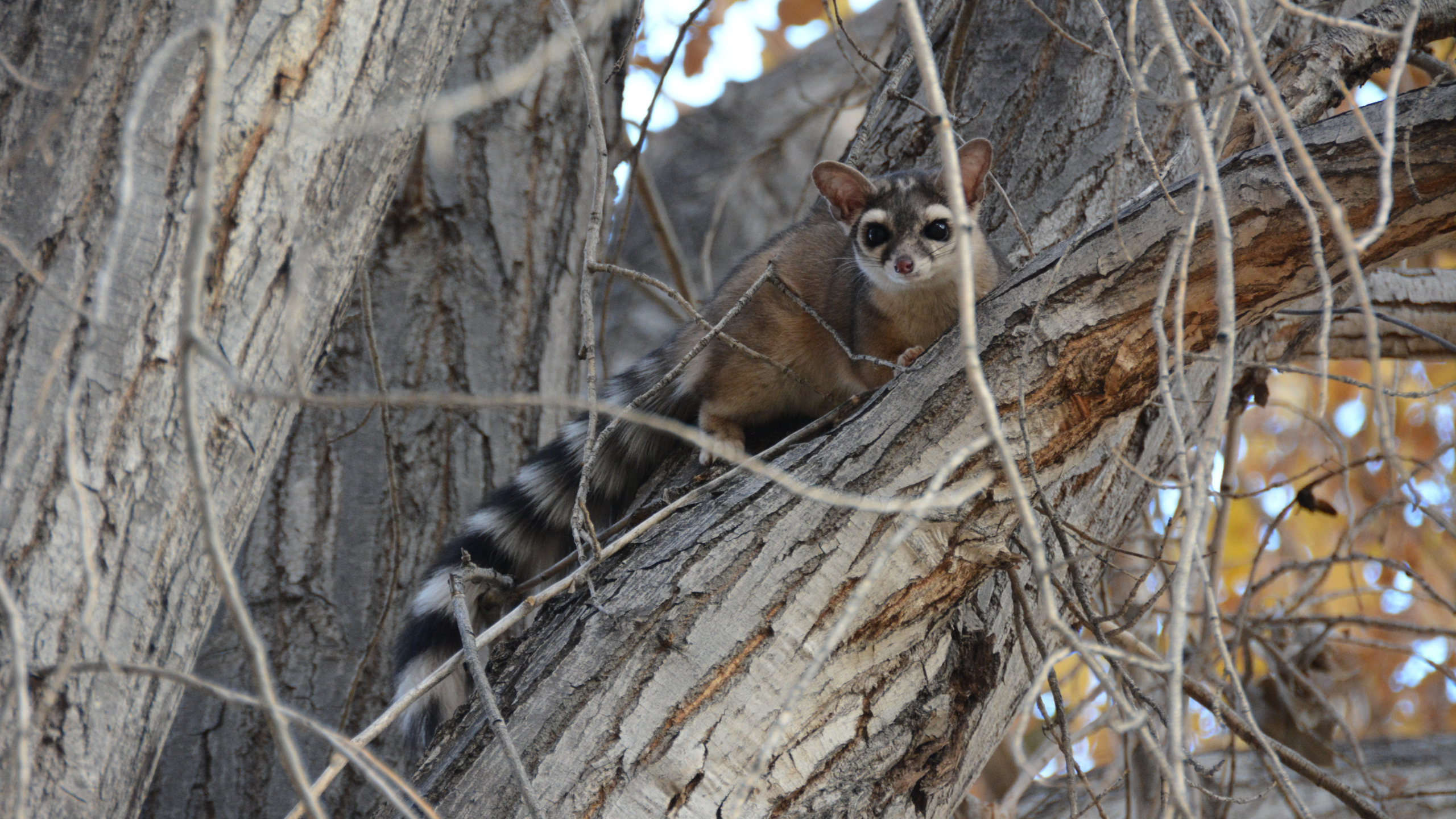Posted: May 22, 2022
Our Wildlife of the Week – 2022 Week 20…
Meet the “Ringtail”!
(Bassariscus Astutus)
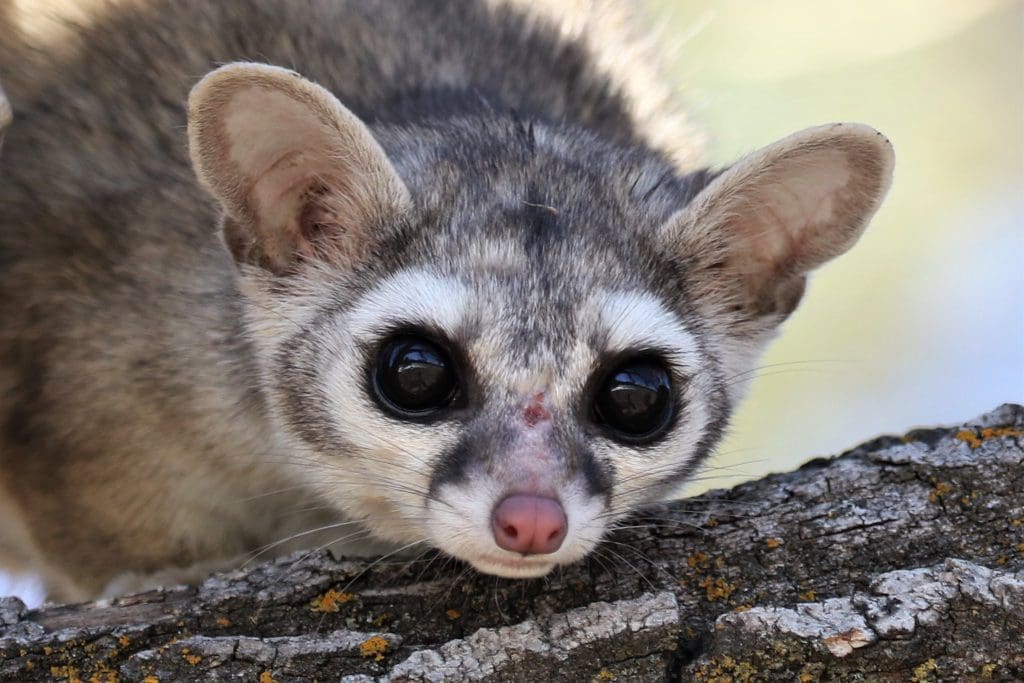
Ringtail Physical Description
Also known as the Ringtail Cat, Ring-Tailed Cat, Miner’s Cat or Bassarisk, the Ringtail is also the State mammal of Arizona. The body mass of both sexes from throughout the geographic range of Ringtails is from 1.8 to 3.0 lbs (824 to 1,338 g). Head and body length is 12.0 to 16.5 in (305 to 420 mm) and tail length is 12.2 to 17.4 in (310 to 441 mm). Shoulder height is about 6.3 in (160 mm).1
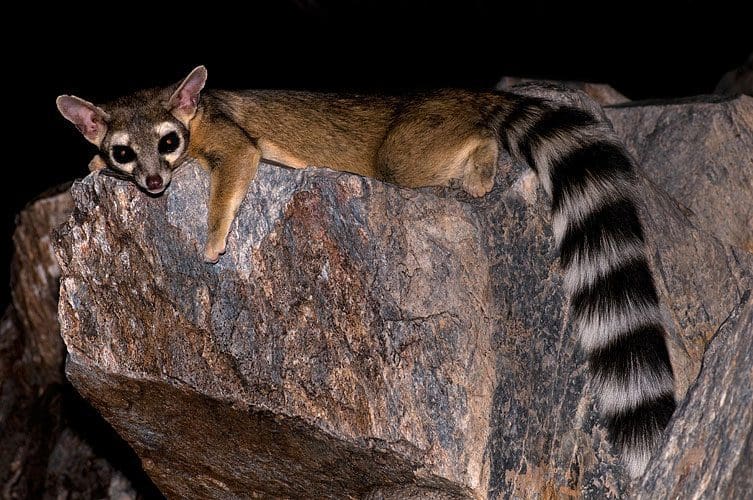
The upper body is buffy in color with a dark brown wash, and the underparts are a pale buff. The tail is bushy and has black and white rings (hence the common name of the species), much like a raccoon. The eyes are ringed by black or dark brown and set within buffy patches. The body is cat-like with a fox-like face and large oval ears. The claws of these animals are semi-retractable.1
SPONSORED ADVERTISEMENT
Ringtail In Action

Ringtail activity occurs mostly at night and occasionally at dusk. Much of its time is spent foraging for food. After feeding, a Ringtail grooms itself while sitting on its hindquarters in a manner similar to that of a cat. A Ringtail licks its fur and forepaws, which it then uses to wipe its cheeks, snout and ears.1
Ringtails are excellent climbers with several behavioral and physical locomotory adaptations. Ringtails can maneuver quickly and agilely among cliffs and ledges by ricocheting from wall to wall. They can also climb in small crevices by chimney stemming (pressing all four feet on one wall and the back against the other). Rapid, headfirst, vertical descents are accomplished by rotating the hindfoot 180 degrees, allowing the pads of the feet and the claws to retain contact with the substrate.1
The Ringtail is solitary except during the mating season. Home ranges can be up to 0.5 sq. miles (136 ha) depending on the availability of food and cover. Males generally have larger home ranges than females and home ranges of same-sex Ringtails do not overlap.1
SPONSORED ADVERTISEMENT
Where to Spot Ringtail
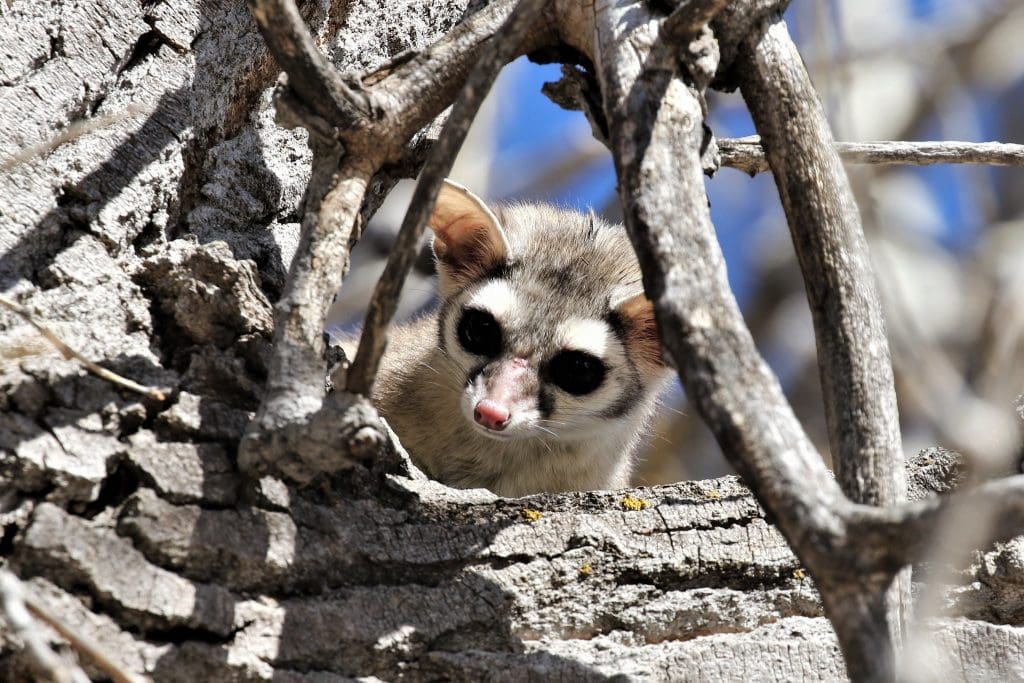
Ringtails can be found from southwestern Oregon and eastern Kansas south through California, southern Nevada, Utah, Colorado, Arizona, New Mexico, Oklahoma, Texas, Baja California and northern Mexico. Outlying records in Arkansas, Louisiana, Alabama, and Ohio are likely the result of a Ringtail habit of boarding railroad cars and being transplanted as a result.1
Ringtails can be found at elevations of up to 9514 ft (2900 m) but are most common at elevations ranging from sea level to 4593 ft (1400 m). Ringtails utilize a variety of habitats. They prefer habitats with rocky outcroppings, canyons, or talus slopes and can be found in semi-arid country, deserts, chaparral, oak woodlands, pinyon pine woodlands, juniper woodlands and montane conifer forests. They also inhabit riparian (wetlands adjacent to rivers and streams) habitats due to the increased food availability.1
The Ringtail can be found in over 22 National Parks and many other National Park Service sites.2 Including:
- Arches National Park
- Big Bend National Park
- Black Canyon of the Gunnison National Park
- Bryce Canyon National Park (April 2021 – Park of the Month)
- Canyonlands National Park
- Capital Reef National Park (September 2020 – Park of the Month)
- Carlsbad Caverns National Park
- Death Valley National Park (March 2021 – Park of the Month)
- Grand Canyon National Park
- Great Basin National Park
- Guadalupe Mountains National Park (October 2020 – Park of the Month)
- Joshua Tree National Park
- Lassen Volcanic National Park
- Mesa Verde National Park
- Petrified Forest National Park
- Pinnacles National Park
- Redwood National & State Parks
- Rocky Mountain National Park
- Saguaro National Park
- Sequoia & Kings Canyon National Parks
- Yosemite National Park
- Zion National Park (December 2020 – Park of the Month)
SPONSORED ADVERTISEMENT
Ringtail Conservation Status
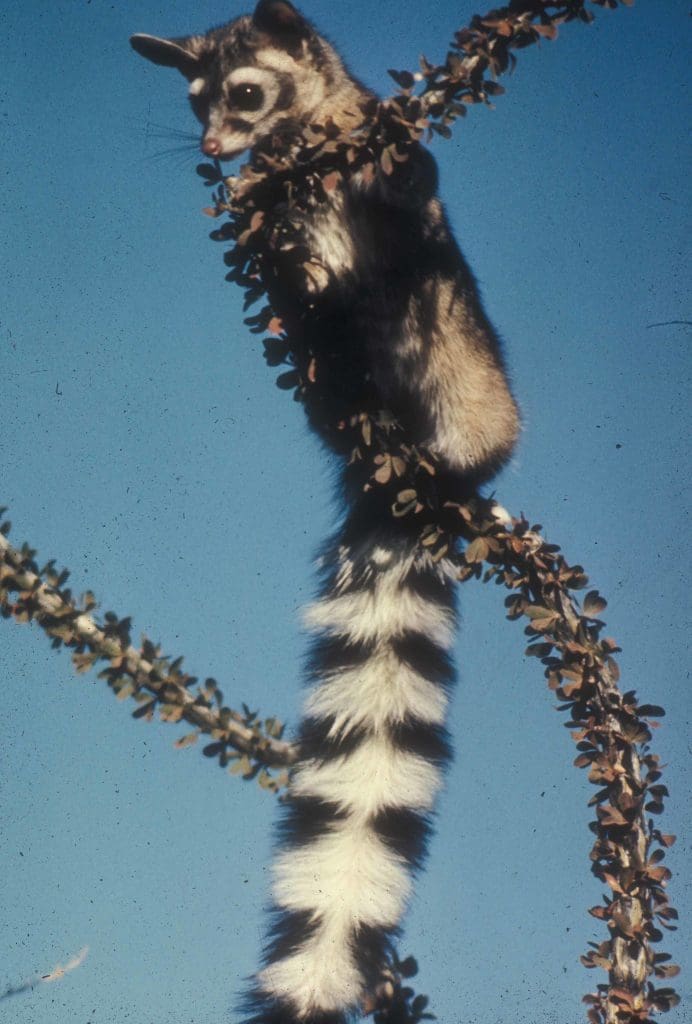
This species has no special conservation status. An important mid-size carnivore, the Ringtail can help keep rodent populations under control.1
Ringtails are sometimes harvested for their fur, however, the coat is not of a very high quality and is generally used as trim only. In the 1976-77 trapping season, the United States produced 88,329 pelts, which sold for an average price of $5.50. The harvest of these animals peaked at about 135,000 in 1978-79 and has since declined. In the 1991-92 season only 5,638 skins were taken, and their average price was $3.62. Although Ringtails now have protection in many states, many fall victim to traps set for other furbearing animals.1
Ringtails cause little economic damage. Occasional domestic poultry are taken and an occasional orchard tree is plundered.1
Ringtails and You
Have you seen a Ringtail in it’s natural environment? Tell us about it in the comments below!
Do you have a picture of these amazing creatures? Share it on social media with us and tag us in your post.
Use the hashtag:
#WildlifeOfTheWeek.
Interested in Wildlife Photography???
Check out this amazing beginners guide from National Geographic:
National Geographic Photo Basics The Ultimate Beginner’s Guide to Great Photography
The above links are provided in this article as affiliate links. Meaning, at no additional cost to you, we’ll earn a commission if you click one and make a purchase. An easy way to help support us if you’re going to buy anyway!
Learn more about all the amazing wildlife in our National Parks and how to safely “Watch Wildlife” on this amazing page with lots of resources from the National Park Service!
Want tips for photographing wildlife? Check out this great article for tips from the National Park Service.
Help support Discover Our Parks by becoming a Patron for as little as $1 a month! Your support will help us continue to provide articles like this and add even more information about our parks to this site.
If you want to make a one-time donation, buy us a coffee!
‘We got some of the above information from the following:
1: Animal Diversity Web – Bassariscus Astutus – Ringtail
2: NPSpecies – Find Parks Where a Species is Found
Check out these recent posts from Discover Our Parks:
- The Isolated Black-bellied Salamander: Wildlife of the Week – 2023 Week 22

- The Splendid Sandhill Crane: Wildlife of the Week – 2023 Week 21
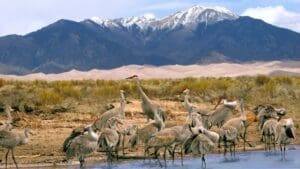
- The Promising Peregrine Falcon: Wildlife of the Week – 2023 Week 20

- The Intimidating Killer Whale: Wildlife of the Week – 2023 Week 19

- The Swift Fox: Wildlife of the Week – 2023 Week 18
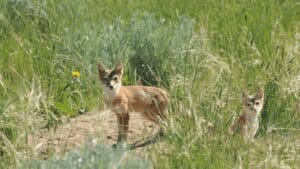
SPONSORED ADVERTISEMENT

